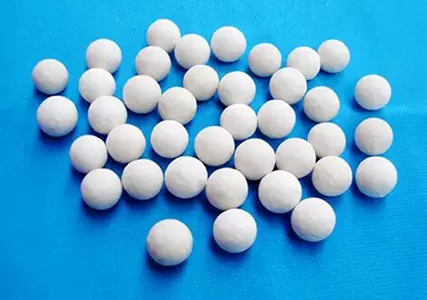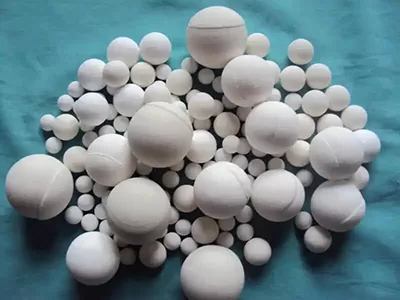Alumina ceramic balls exhibit good acid resistance, especially to non - oxidizing acids, with their resistance increasing with higher alumina content, though they may be susceptible to strong oxidizing acids under certain conditions. This property makes them suitable for various industrial applications involving acidic environments, from chemical processing to wastewater treatment.

The acid resistance of alumina ceramic balls is primarily determined by their alumina (Al₂O₃) content. High - purity alumina balls (95% to 99% Al₂O₃) show superior resistance compared to lower purity grades (85% or less). The dense structure of high - purity alumina minimizes pores, reducing the chance of acid penetration and corrosion. They can withstand exposure to dilute non - oxidizing acids like hydrochloric acid and sulfuric acid at moderate temperatures, making them ideal as packing in acid - processing columns or as grinding media in acidic slurry applications.
However, strong oxidizing acids such as nitric acid and hydrofluoric acid can affect alumina ceramic balls, especially at high concentrations and elevated temperatures. Hydrofluoric acid reacts with alumina to form soluble aluminum fluoride, leading to gradual erosion of the ball surface. Similarly, concentrated nitric acid may cause surface degradation over time, particularly under prolonged exposure. For such harsh acidic conditions, alternative ceramic materials like silicon carbide are often preferred.

Temperature and acid concentration significantly influence the (acid resistance) of alumina ceramic balls. At room temperature, even lower purity alumina balls can resist dilute acids effectively. But as temperature rises above 100°C, their resistance diminishes, with higher purity grades maintaining better performance longer. For example, 99% alumina balls can tolerate 5% sulfuric acid at 80°C for extended periods, while 85% alumina balls may show signs of corrosion under the same conditions.
Surface finish also plays a role. Smooth - surfaced alumina ceramic balls are less prone to acid attack than those with rough surfaces, as fewer pores and irregularities provide less area for acid to react. This makes precision - ground alumina balls more suitable for critical acidic applications where minimal corrosion is essential.
In summary, alumina ceramic balls offer reliable acid resistance to non - oxidizing acids, with higher purity grades performing better. While they may not withstand strong oxidizing acids or extreme temperatures, their cost - effectiveness and durability make them a practical choice for many acidic industrial processes, from chemical packing to acid - based grinding operations.



